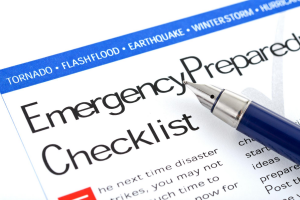Emergency Preparedness—Planning For Action
 That usually means that when incidents occur and response and mitigation are critical, Police, Fire, EMS, and Public Works departments are expected to have the knowledge, ability, training and plans to address these emergencies.
That usually means that when incidents occur and response and mitigation are critical, Police, Fire, EMS, and Public Works departments are expected to have the knowledge, ability, training and plans to address these emergencies.
The scope of this article is a focus on the National Preparedness Goal established by the Federal Emergency Management Agency (FEMA). As defined by FEMA, the goal can be simply stated as:
“A secure and resilient nation with the capabilities required across the whole community to prevent, protect against, mitigate, respond to, and recover from the threats and hazards that pose the greatest risk.”
Achieving the goal of preparedness requires focusing on five critical functions:
- Prevention
- Protection
- Mitigation
- Response
- Recovery
These five critical functions or mission areas are key in coordinating a community’s emergency planning activities and development of an Emergency Operations Plan.
Why Is It Necessary For Your Community To Have an Emergency Operations Plan?
Community members have an expectation that elected and appointed leaders will make decisions and have plans to act immediately when a disaster or major incident threatens the safety or livelihood of the community. Also, elected leaders in a community are generally legally responsible for ensuring that necessary and appropriate actions are taken to protect people and property from the adverse effects of any emergency or disaster.
The Emergency Operations Plan should address key areas of how a community will prepare for, respond to, and handle an emergency, as well as provide for regular review of the plan.
- Communication
- Resources and Assets Needed
- Safety and Security Issues
- Staff Responsibilities
- Utilities Management (depending on the emergency)
- Regular Testing and Evaluation of the Plan
As with any plan, the Emergency Operations Plan should be flexible, scalable, and should be regularly exercised and reviewed. Exercising the EOP helps to validate the plan, as well as identify deficiencies in the plan in a non-emergency environment. This will allow an organization to amend or revise the plan to better meet the anticipated emergency.
An important element of the emergency planning and exercise process is conducting an After Action Review and the preparation of an After Action Report/ Improvement Plan (AAR/IP). The importance of conducting the AAR is to analyze the organization’s core capabilities and to learn what elements of the plan may need revision or improvement. What worked and what did not? For multi-jurisdictional plans, it is especially important to conduct regular exercises of plans that include and After Action Review to be better prepared for actual emergencies and disasters.
GovHR USA consultants are available to assist organizations with review and revision of their Emergency Operations Plans. For more information, contact: info@govhrusa.com
By: Joe DeLopez, Vice President
![]()

